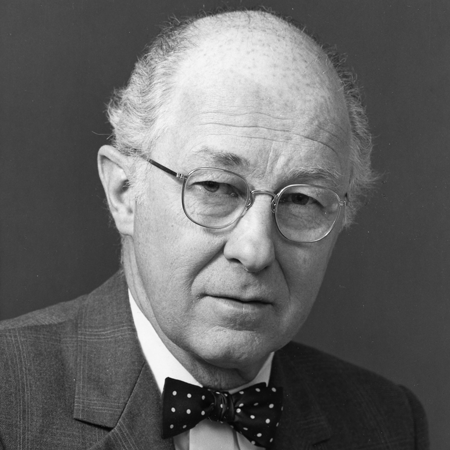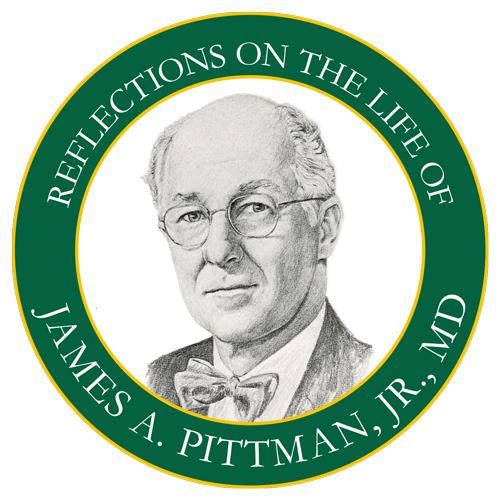 My tribute to the most memorable person in my academic life will involve autobiographical recollections of my career and interactions with him. I hope that the reader will forgive this somewhat egocentric point of view.
My tribute to the most memorable person in my academic life will involve autobiographical recollections of my career and interactions with him. I hope that the reader will forgive this somewhat egocentric point of view.
Meeting Jim via Phone
My VA three-year Clinical Investigator Award would end June 30, so I spent some time looking at various academic opportunities in Chicago, and none were very appealing. I looked at a job at Indiana University that was attractive, but not the right fit for me. Thirty minutes after I called Leo Oliner to decline the offer, my office phone rang.
My name is Jim Pittman and I’m calling from the University of Alabama to tell you about a job here. I heard that you are looking for one.
No, I said, I just turned an offer down for a job in Indianapolis.
I know, Jim said. I just talked to Leo. Are you prejudiced against the South?
No, I said empathetically.
Would you be willing to come to Birmingham to look at a position here?
Maybe.
By the time the conversation ended, I was enthusiastic about making my first visit to Alabama. Jim was a great recruiter, and the Assistant Chief of Nuclear Medicine position was just right for me. I was offered my own lab at the Birmingham VA in the research bridge that connected to the University laboratories and hospital. The space was good and it came with several experienced technicians and a secretary. My clinical work involved sharing responsibility with Jim for reading nuclear medicine scans at the VA.
Although I worked independently in my lab, my research interests and Jim’s dovetailed very closely. We were both interested in purification of thyrotropin (TSH) and measuring it in serum. With Jim’s encouragement, I developed a radioimmunoassay for TSH, modeled after one developed by Bill Odell at NIH. In those days, measuring TSH patients in various clinical and experimental situations was easy, no consent forms for just obtaining blood samples.
Synthesizing TRH with Charles Baugh
When we returned to Birmingham, Jim and I approached Charles Baugh, a solid-phase peptide chemist in the Biochemistry Department, who said that synthesis of TRH was a “cinch.” He outlined the method, then gave it to his technician who worked with me on it. The synthesis was very difficult technically and could never have been done in my lab, but it was straightforward for Baugh’s lab and technician. Fortunately, once synthesized, TRH, was very stable. We published the synthesis in 1970. I administered TRH to euthyroid controls and measured the subsequent increased TSH levels. We found that there was a large increase in the already high serum TSH levels of patients with hypothyroidism. Patients with hyperthyroidism had suppressed serum TSH levels that were too low to measure with our assay at that time, and their TSH levels remained undetectable after giving TRH, findings that we published in another 1970 paper that came together quickly. In 1971, Jim and I reported more comprehensive studies of regulation of TSH in a paper in the Annals of Internal Medicine that became a “Citation Classic.”
Working with Jim was great for several reasons. He was enthusiastic about science and research. He was eager to review the data from our studies. He was an excellent typist and would often type out a quick first draft of a manuscript. His writing and wordsmithing were exemplary. For me, he was a great teacher. We became a very effective team.
Jim was at ease with all people in all walks of life. He knew the technicians in his laboratory and in the Nuclear Medicine Department very well personally and was friendly and cordial with them. There was no separation by socioeconomic class in his interactions with them. In introducing people, Jim liked to point out each person’s accomplishments and expertise in a cordial, succinct manner. Jim brought out the best in each of his employees. There was a willingness to stay late to finish the job because each felt that their work was very important. Observing Jim in action in the clinic, laboratory or hospital was a learning experience for how to do it right.
Reporting First Patient with Hypothalamic Hypothyroidism
Connie Pittman evaluated a 19-year-old man with a diabetes insipidus that developed after a severe head injury seven years prior. He had many symptoms of hypothyroidism and low serum thyroxine levels. We tested him with an injection of TRH and his TSH levels increased, indicating that his pituitary was capable of making TSH. His pituitary did not release TSH because the hypothalamic signal was missing, probably due to his traumatic brain injury. Jim wrote up this case very quickly and sent it to the New England Journal of Medicine. It was published as the first established case of hypothalamic hypothyroidism. It also demonstrated to me that the prize for academic accomplishment went to the swift. Other clinical endocrinologists soon acquired the tools for studying these patients because the Abbot Company synthesized a large amount of TRH and made it available for clinical studies. Abbot had hoped that TRH would be useful as a treatment for depression and neurologic diseases, but this never materialized. Nowadays, TRH is not even available for diagnostic studies because the sales market for it is insufficient to make its production worthwhile.
Rebel Who Married a ‘Chinese Girl’
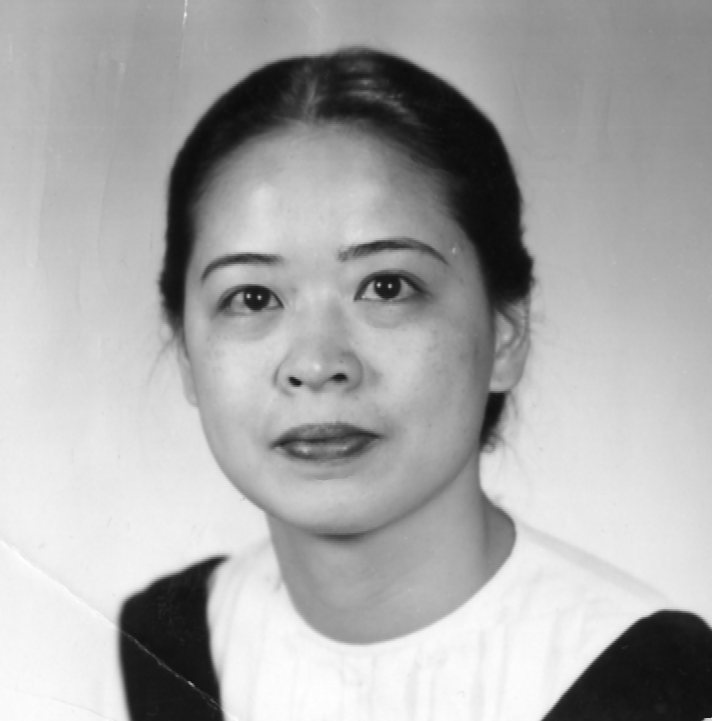 Constance Shen, mid-1950sJim regarded himself as a rebel in a conservative community. He loved to point out that he “married a Chinese girl” at a time when interracial marriage was looked on with disfavor. His wife, Connie Shen Pittman, was a graduate of Wellesley College and Harvard Medical School. She shared many of Jim’s interests and had an adventurous spirit. Apparently, they had an agreement that her basic research was independent from that performed by Jim and his collaborators. Connie was recognized independently as an accomplished investigator in the area of thyroid hormone metabolism. In 1991, she became the first woman to be elected president of the American Thyroid Association, an accomplishment of which Jim was very proud.
Constance Shen, mid-1950sJim regarded himself as a rebel in a conservative community. He loved to point out that he “married a Chinese girl” at a time when interracial marriage was looked on with disfavor. His wife, Connie Shen Pittman, was a graduate of Wellesley College and Harvard Medical School. She shared many of Jim’s interests and had an adventurous spirit. Apparently, they had an agreement that her basic research was independent from that performed by Jim and his collaborators. Connie was recognized independently as an accomplished investigator in the area of thyroid hormone metabolism. In 1991, she became the first woman to be elected president of the American Thyroid Association, an accomplishment of which Jim was very proud.
A Great Humanist
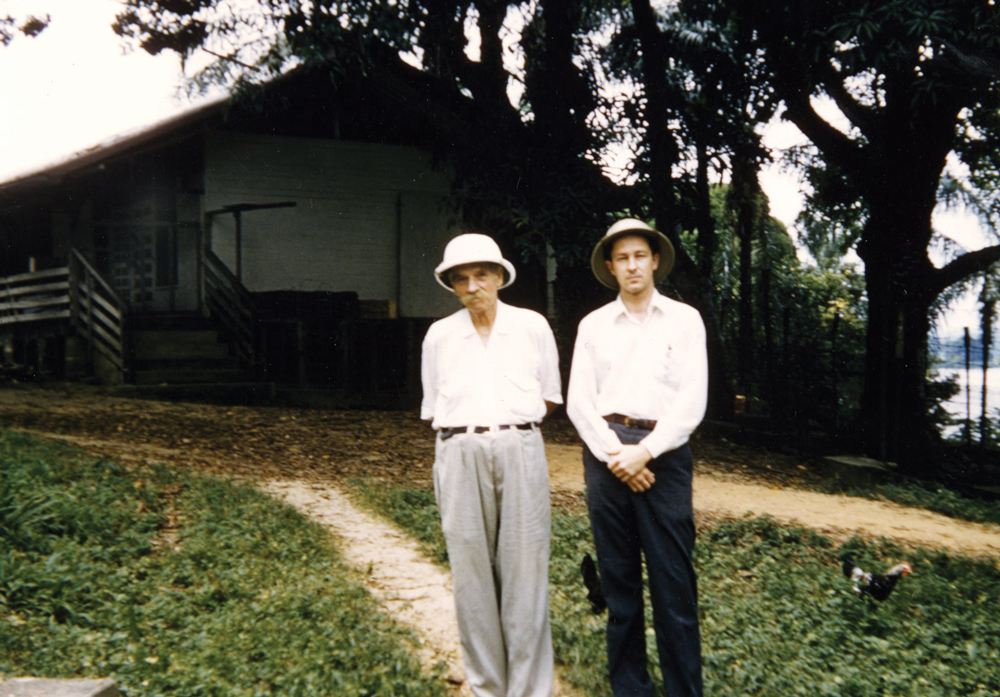 Pittman with Schweitzer, French Equatorial Africa, 1957Having learned to fly as a young man, Jim spent some time flying around Africa in spring 1957 and arranged to meet Albert Schweitzer in his jungle hospital in Lambarene, French Equatorial Africa (now Gabon). I never learned his motivation for going there other than that it was a unique adventure and an opportunity to meet the great man who had been awarded to Nobel Peace Prize in 1952. Schweizer was one of the founders of the Committee for a Sane Nuclear Policy. In April, 1957, Schweizer made a famous speech pleading for the abolition of nuclear weapons. Could Jim have had an influence on this speech or was it otherwise? Jim and I talked several times about nuclear weapons. Jim knew that I was a graduate student in the Chemistry Department at Caltech when Linus Pauling was the chairman in 1952. Pauling received his Nobel Peace Prize in 1962 for his effort to stop the development of nuclear weapons. He had written a highly acclaimed book entitled, “No More War!” In our discussions through the years, Jim stated that a war involving nuclear weapons would start in the Middle East, now still a great concern for the United States.
Pittman with Schweitzer, French Equatorial Africa, 1957Having learned to fly as a young man, Jim spent some time flying around Africa in spring 1957 and arranged to meet Albert Schweitzer in his jungle hospital in Lambarene, French Equatorial Africa (now Gabon). I never learned his motivation for going there other than that it was a unique adventure and an opportunity to meet the great man who had been awarded to Nobel Peace Prize in 1952. Schweizer was one of the founders of the Committee for a Sane Nuclear Policy. In April, 1957, Schweizer made a famous speech pleading for the abolition of nuclear weapons. Could Jim have had an influence on this speech or was it otherwise? Jim and I talked several times about nuclear weapons. Jim knew that I was a graduate student in the Chemistry Department at Caltech when Linus Pauling was the chairman in 1952. Pauling received his Nobel Peace Prize in 1962 for his effort to stop the development of nuclear weapons. He had written a highly acclaimed book entitled, “No More War!” In our discussions through the years, Jim stated that a war involving nuclear weapons would start in the Middle East, now still a great concern for the United States.
Atlantic City Birding
In the 1960s, there was an annual clinical research meeting in Atlantic City in late April. This was a forum for research across many disciplines and a good time for academicians to meet as well as to advance their careers by learning about available jobs. In contrast to meetings today, the three-day program did not have early riser or evening events unless they were purely social. Jim, an expert birder, organized many outings at 5:30 a.m. to drive to Brigantine Wild Life Refuge, where there was excellent birding. He located many birds and pointed them out as we trekked over the marshy land. Unfortunately, legalized gambling in 1976 changed Atlantic City so that it was an unfavorable place for the national clinical research meetings, which then moved to Washington, D.C. and subsequently to Chicago, their current home.
Cap the Knife and Rosalyn Yalow
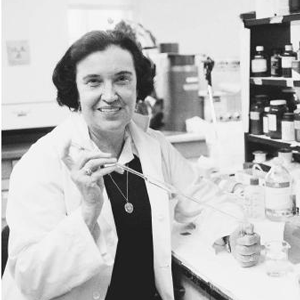 Rosalyn YalowIn 1971, Jim left Birmingham to take the job of Director of VA Medical Research in Washington, D.C., a prestigious position at which he was exemplary. He enjoyed traveling to various VA hospitals to survey and improve their research programs, and appeared to thrive on setting policy to maximize the use of the research dollars.
Rosalyn YalowIn 1971, Jim left Birmingham to take the job of Director of VA Medical Research in Washington, D.C., a prestigious position at which he was exemplary. He enjoyed traveling to various VA hospitals to survey and improve their research programs, and appeared to thrive on setting policy to maximize the use of the research dollars.
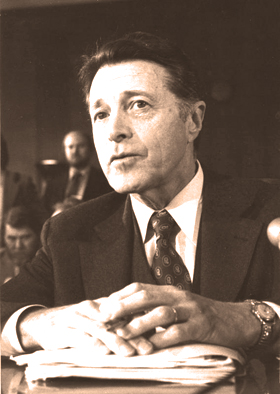 Caspar WeinbergerOne story illustrates his crucial role: Rosalyn Yalow, a Nobel Prize winner ensconced at the Bronx VA, called Jim one day and was very upset. She related that the U.S. government budget for next year, as printed in that day’s New York Times, did not have a line item for VA research. Jim found out that Caspar Weinberger (“Cap the Knife”), then President Nixon’s Director of the Office of Management and Budget, had decided that VA research was redundant because the NIH funded medical research. I believe Jim’s behind-the-scenes action saved VA medical research and the careers of many VA investigators.
Caspar WeinbergerOne story illustrates his crucial role: Rosalyn Yalow, a Nobel Prize winner ensconced at the Bronx VA, called Jim one day and was very upset. She related that the U.S. government budget for next year, as printed in that day’s New York Times, did not have a line item for VA research. Jim found out that Caspar Weinberger (“Cap the Knife”), then President Nixon’s Director of the Office of Management and Budget, had decided that VA research was redundant because the NIH funded medical research. I believe Jim’s behind-the-scenes action saved VA medical research and the careers of many VA investigators.
Back to UAB
After Jim’s stint in Washington, D.C., he returned to Birmingham as the dean of the UAB School of Medicine. I visited him twice and was very impressed with the large building program in the medical center as well as the growth of the UAB campus. Jim loved to show it off and was very proud of his fundraising accomplishments. He knew all of the potential donors and politicians in Birmingham and was extremely and justifiably proud of the city’s accomplishments. I believe his success as a builder and fundraiser was directly related to his wonderful, likeable, outgoing personality as well as his keen intellect. He never put anyone down and always brought out all the best in his associates and colleagues. After Jim’s retirement from the deanship, he continued to work on Tinsley Harrison, MD, Teacher of Medicine (New South Books, 2015), a never-ending challenge and one of his many lasting legacies. Jim remains the most unforgettable character I’ve known.
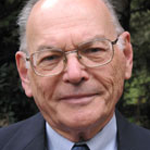 Jerome M. Hershman, MD, is Distinguished Professor of Medicine at the David Geffen School of Medicine at the University of California, Los Angeles; Associate Chief of the Endocrinology and Diabetes Division of the West Los Angeles VA Medical Center; and Director of the Endocrine Clinic. He has been Editor of the Thyroid and now edits Clinical Thyroidology. Past positions include faculty member in the Departments of Medicine at Northwestern University and UAB. He received his MD degree from the University of Illinois College of Medicine in 1957, followed by an internship at Cook County Hospital in Chicago, internal medicine residency at Beth Israel Hospital and the VA Hospital in Boston, and endocrinology fellowship at Tufts New England Medical Center in Boston.
Jerome M. Hershman, MD, is Distinguished Professor of Medicine at the David Geffen School of Medicine at the University of California, Los Angeles; Associate Chief of the Endocrinology and Diabetes Division of the West Los Angeles VA Medical Center; and Director of the Endocrine Clinic. He has been Editor of the Thyroid and now edits Clinical Thyroidology. Past positions include faculty member in the Departments of Medicine at Northwestern University and UAB. He received his MD degree from the University of Illinois College of Medicine in 1957, followed by an internship at Cook County Hospital in Chicago, internal medicine residency at Beth Israel Hospital and the VA Hospital in Boston, and endocrinology fellowship at Tufts New England Medical Center in Boston.